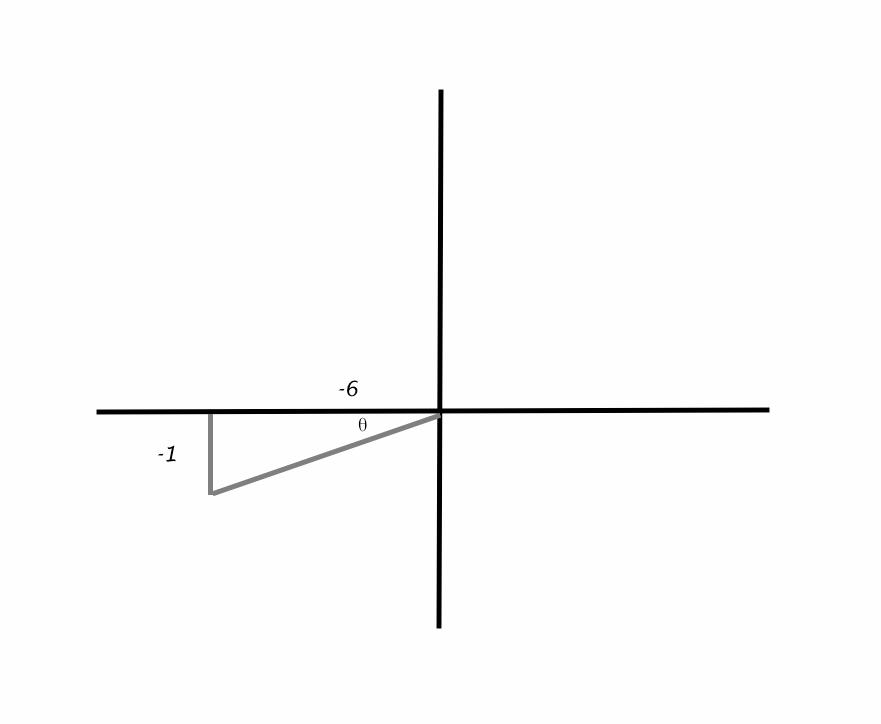The terminal side of θ lies on a given line in the specified quadrant. Find the values of the six trigonometric functions of θ by finding a point on the line? Line y = 1/6x Quad: III
1 Answer
You have to start by finding a point that lies on this line. I think the simplest would be
We now draw an imaginary triangle, as shown in the following diagram.

We can now clearly see that our side opposite
We must finally find the hypotenuse prior to determining the ratios. By pythagorean theorem:
However, the hypotenuse can never have a negative length, so we can only accept the positive solution. We can now find our ratios.
Hopefully this helps!

